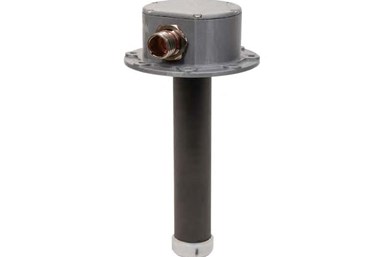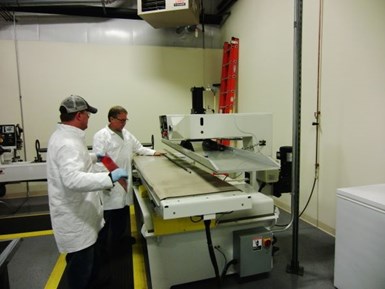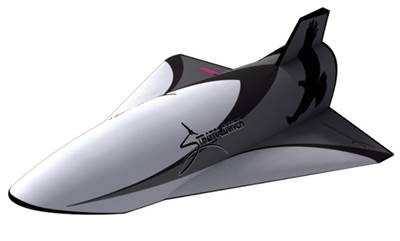Share
Read Next

Photo Credit, all images: Liquid Measurement Systems
Founded in 1989, Liquid Measurement Systems (LMS, Fairfax, Vt., U.S.) designs and manufactures fuel quantity gauging on rotary- and fixed-wing aircraft. Among the company’s product offerings are a range of capacitance fuel gauging probes, which each feature two concentric carbon fiber composite tubes that act as two conductive plates with dielectric current running in between.
A conventional capacitance fuel gauging system consists of two separate pieces of hardware, connected by wires: a sensor (also called a probe) and a signal conditioning unit (SCU). “The probes are passive devices which are excited and measured by an SCU to monitor and report fuel height in the tank. The SCU conditions the signals coming from all of the probes in the tank(s) and factors in probe location, tank geometry, attitude [orientation of the aircraft], fuel temperature and other variables, to calculate the total quantity of fuel in the tank — expressed in weight rather than volume,” explains Steve Pickering, director of technology at LMS. Embedded software in the SCU converts all of the data received into a value for pounds of fuel in each tank, and transmits this information to a display unit in the cockpit or on a refueling panel.
LMS has been using carbon fiber-reinforced polymer (CFRP) composites for the main structural components on its fuel gauging probes since its founding in 1989, despite aluminum being the conventional material. The company fabricates all of its fuel gauge tubes on site using a roll-wrapping process, in which layers of prepreg are rolled and taped by hand onto a mandrel and oven cured. The tubes are then untaped, cut to length and machined to a uniform diameter and wall thickness prior to assembly. For these tubes, LMS says it chose carbon fiber prepreg with a proprietary resin system for its mechanical and electrical performance properties, as well as its resistance to the corrosive and oxidative effects of jet fuel.

Compared to aluminum, using carbon fiber composites for these parts amounts to a 40% lighter part, LMS says. Plus, composites are resistant to dents, scratches, cracks and corrosion, and don’t absorb hand oils, which can affect performance. Aluminum tubes also require riveted connections to the probe’s electrical components, which can wear over time due to friction, whereas the composite tube is bonded to the electrical components.
LMS’ carbon fiber fuel gauging probes offer options that are adaptable to a range of aircraft tanks. Most recently, the company decided to develop a product specifically catered to small aircraft, aiming for higher safety, more accuracy and higher reliability within a small tank.
The resulting onboard processing probe (OPP) was launched in summer 2022. Featuring the same carbon fiber composite two-tube design as LMS’ other offerings, the OPP is an all-in-one system that combines a level-sensing probe with an SCU, eliminating the need for two pieces of hardware or complex wiring. The system is designed to act independently in a single-tank aircraft with simple tank geometry or work as one of several independent units gauging fuel quantity in one or more tanks, each unit returning its respective fuel quantity to the specified aircraft data destination.
Related Content
Composite materials, design enable challenging Corvette exterior components
General Motors and partners Premix-Hadlock and Albar cite creative engineering and a move toward pigmented sheet molding compound (SMC) to produce cosmetic components that met strict thermal requirements.
Read MoreCFRP planing head: 50% less mass, 1.5 times faster rotation
Novel, modular design minimizes weight for high-precision cutting tools with faster production speeds.
Read MoreLighter, stronger, faster bionic hand aided by composites design
Psyonic’s touch-sensing prosthetic hand leverages bionic technology, 3D printing and a carbon fiber composite exterior for light weight, high strength and high-tech functionality.
Read MorePull-wound carbon fiber poles enable lightweight, compact, rigid emergency stretcher
Based on military feedback, Epsilon Composite developed an optimized, foldable stretcher that combines telescopic pull-wound carbon fiber tubes.
Read MoreRead Next
LMS to develop composite fuel gauge for Stratolaunch hypersonic test vehicle
Carbon fiber composite fuel probe and signal conditioner unit will meet Mach 6 aircraft speed and intense flight environment requirements.
Read MoreAll-recycled, needle-punched nonwoven CFRP slashes carbon footprint of Formula 2 seat
Dallara and Tenowo collaborate to produce a race-ready Formula 2 seat using recycled carbon fiber, reducing CO2 emissions by 97.5% compared to virgin materials.
Read MorePlant tour: Daher Shap’in TechCenter and composites production plant, Saint-Aignan-de-Grandlieu, France
Co-located R&D and production advance OOA thermosets, thermoplastics, welding, recycling and digital technologies for faster processing and certification of lighter, more sustainable composites.
Read More

.jpg;width=70;height=70;mode=crop)





















